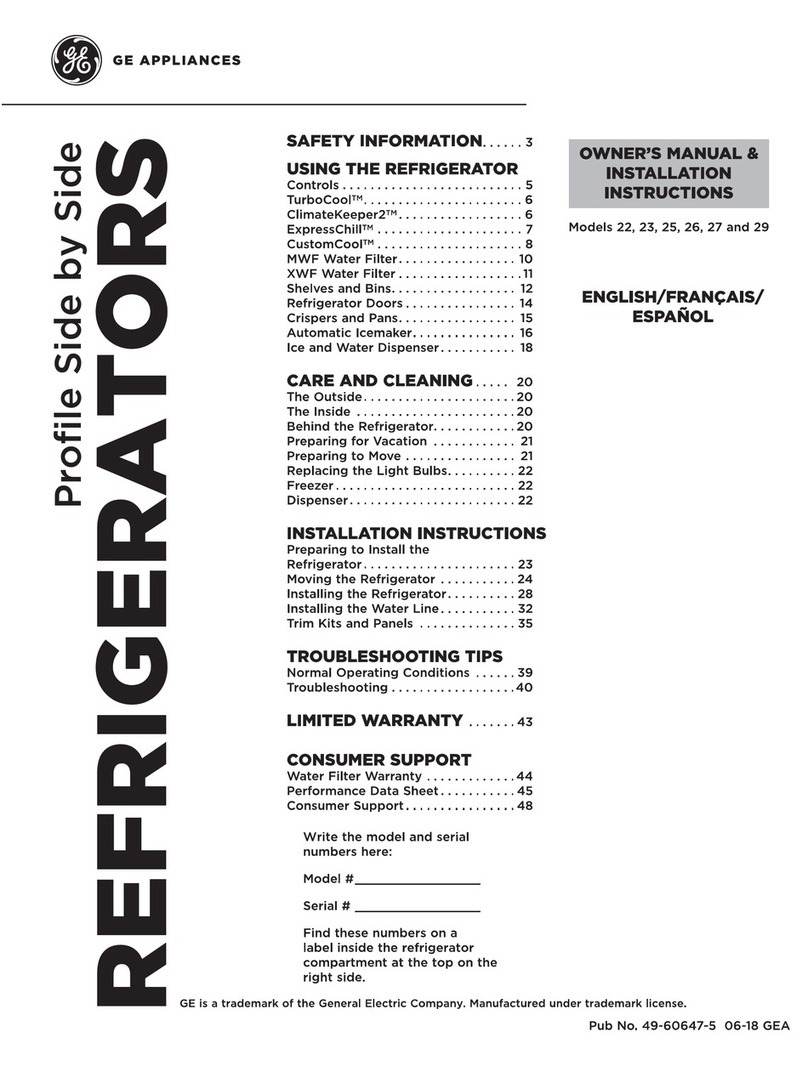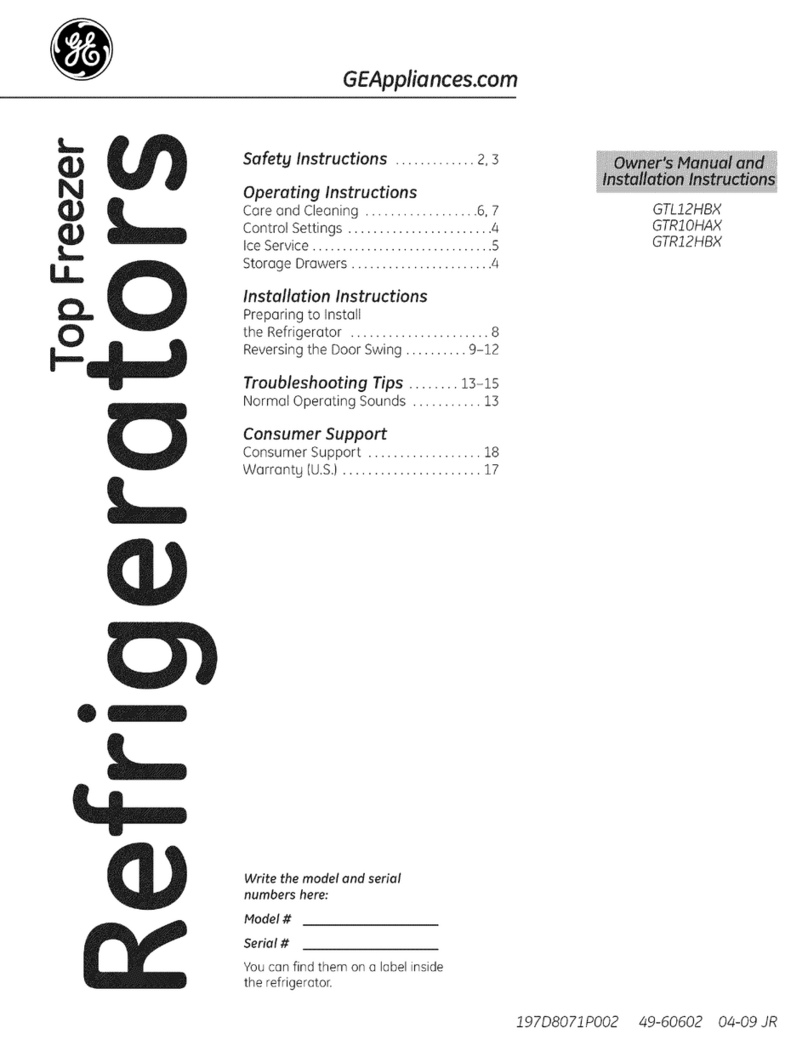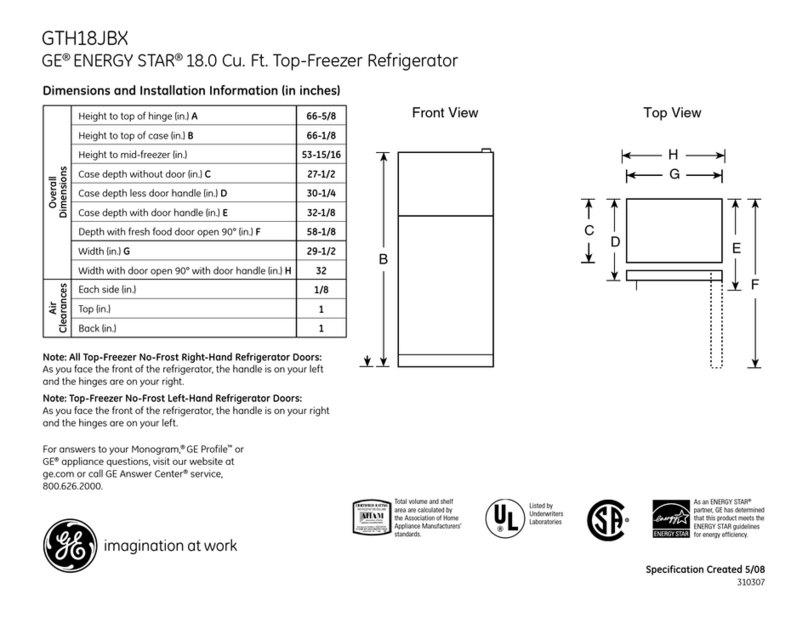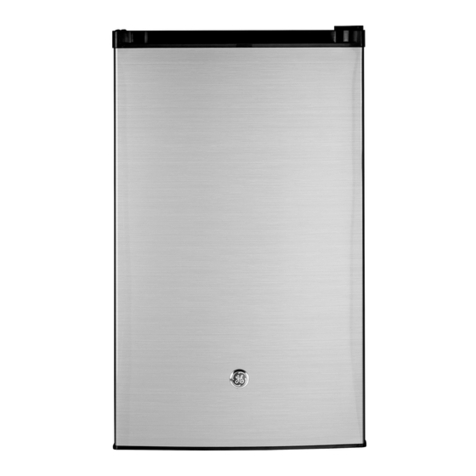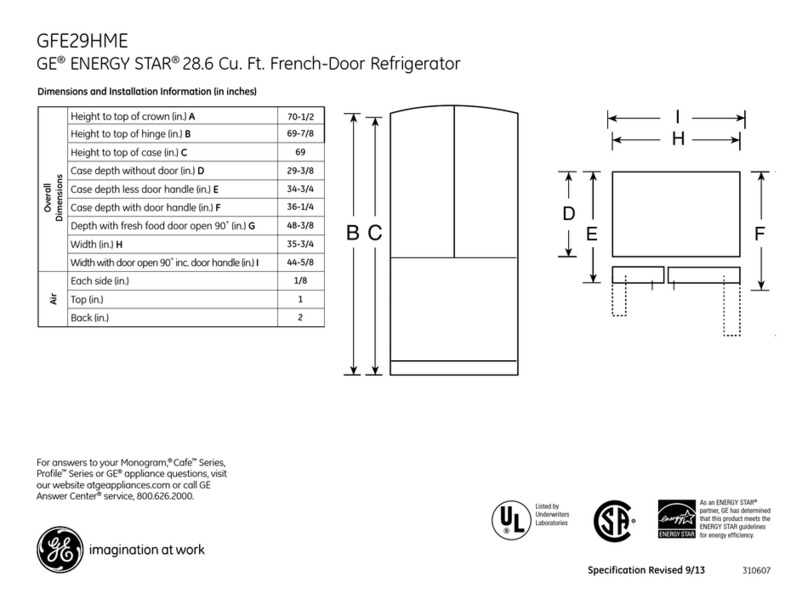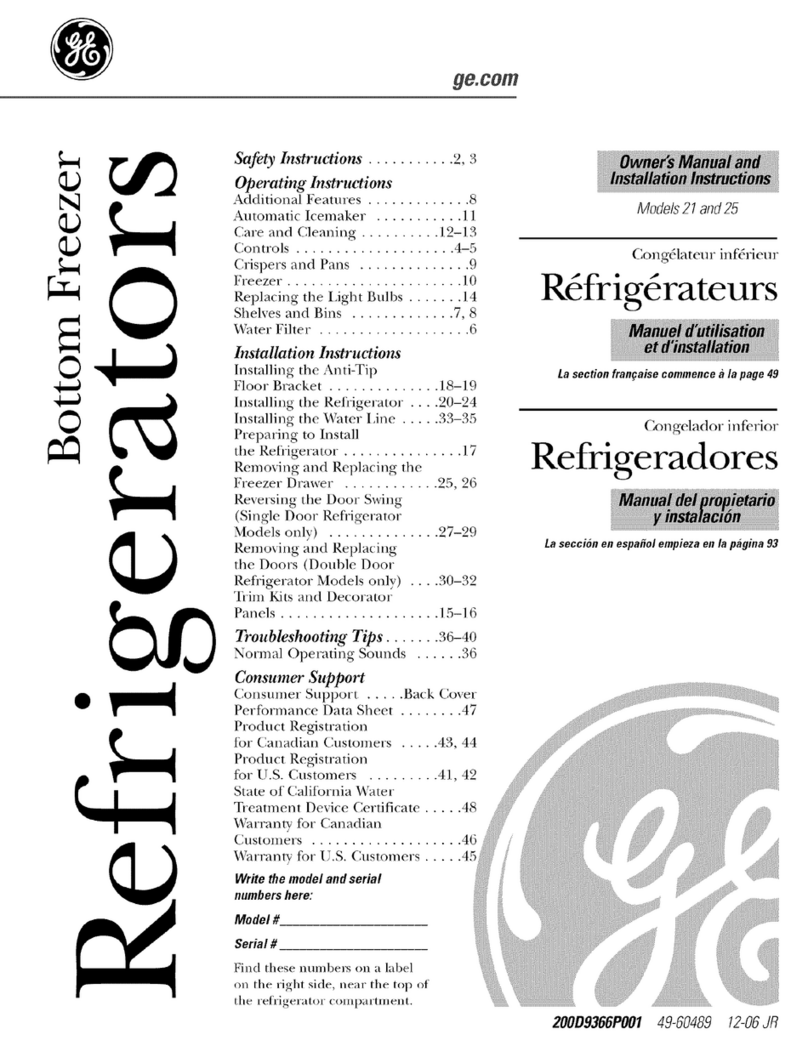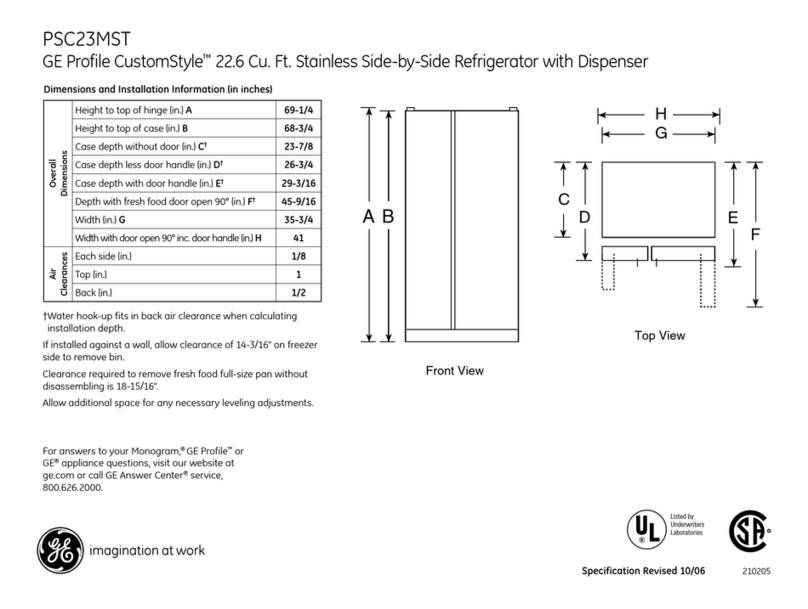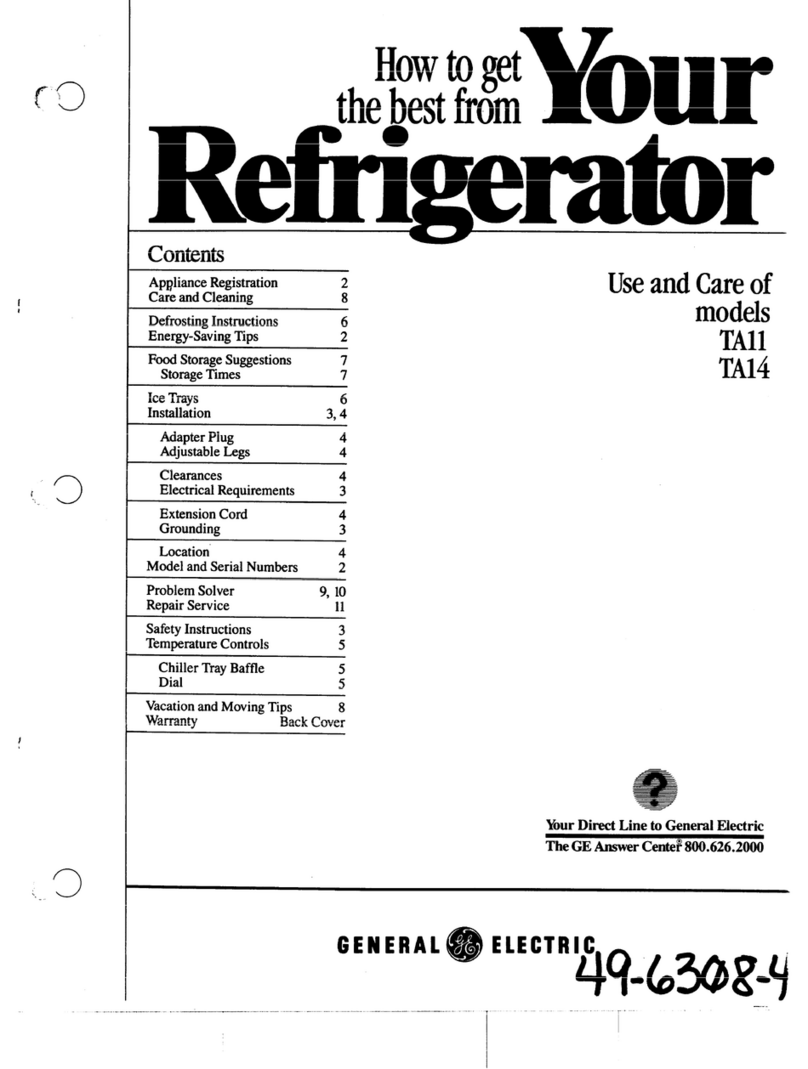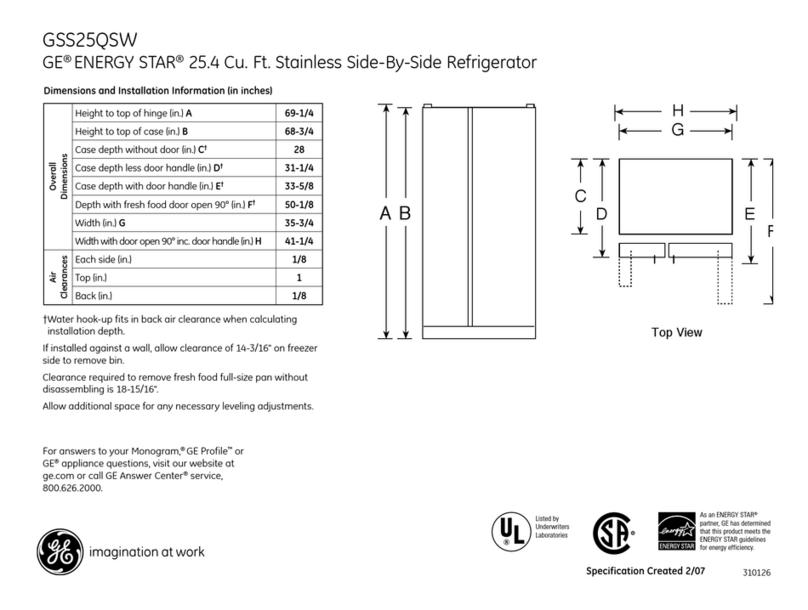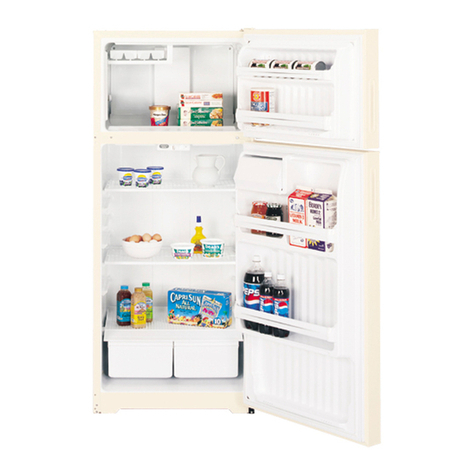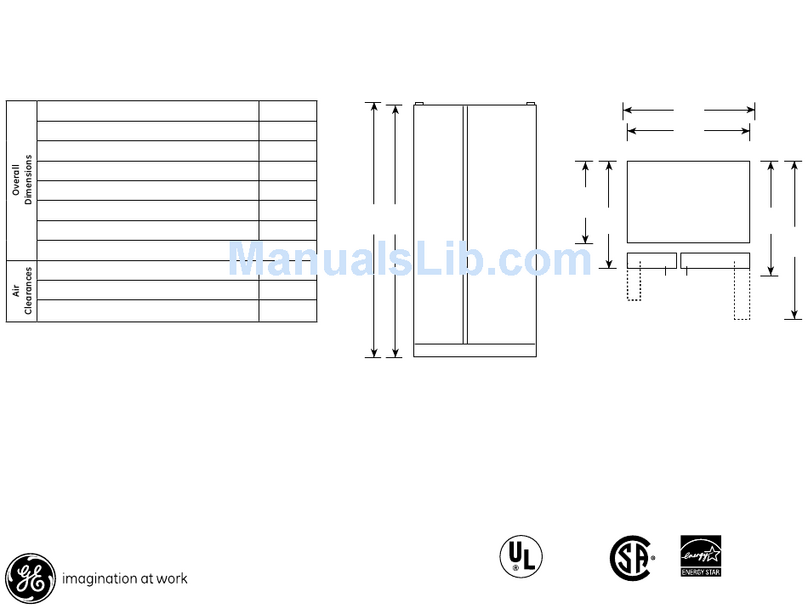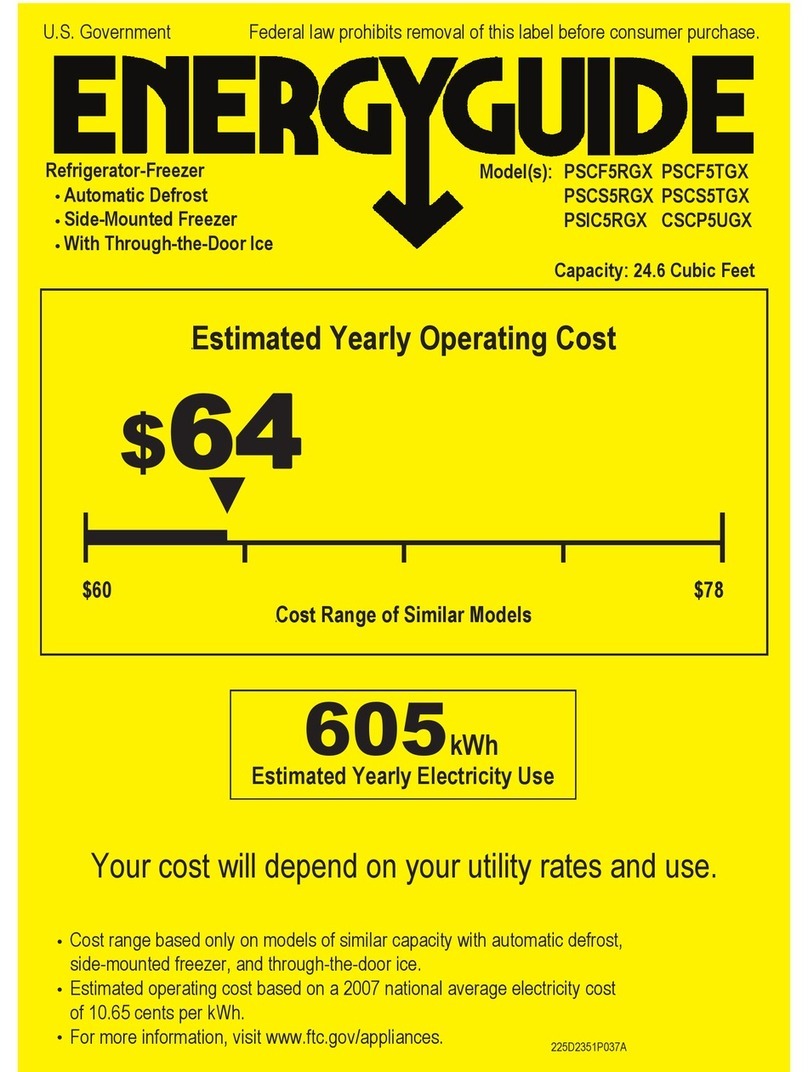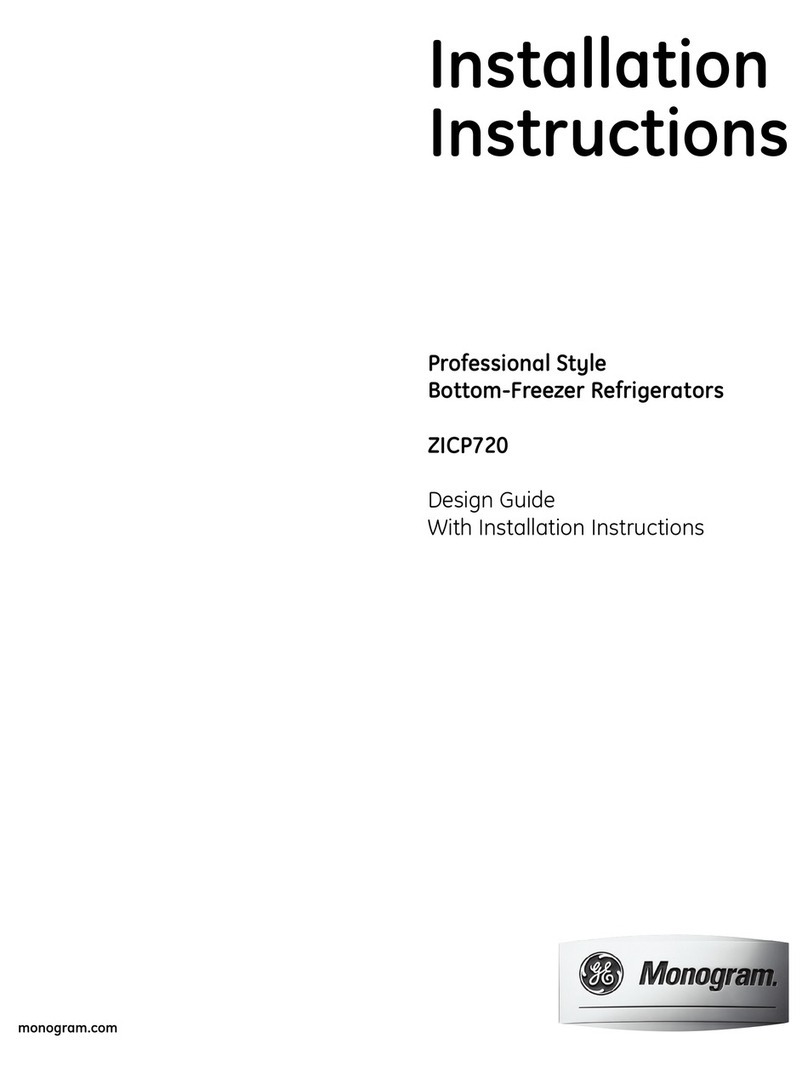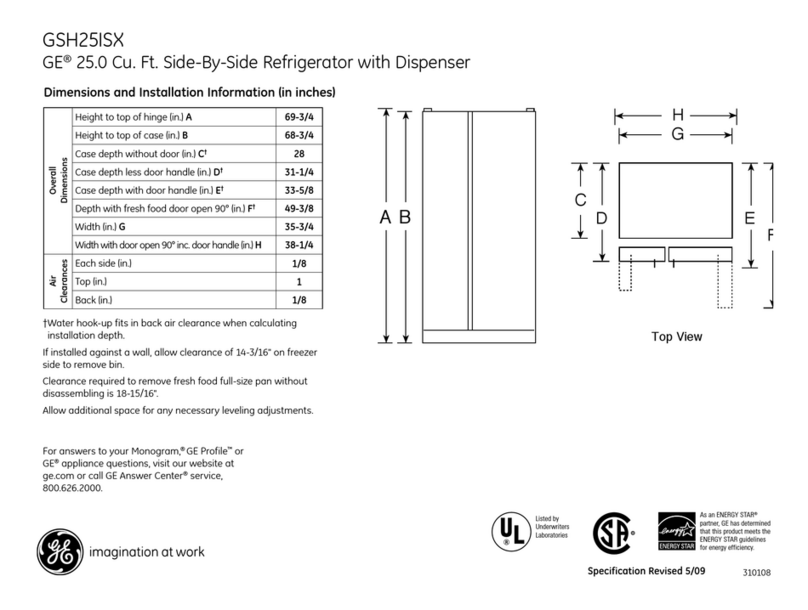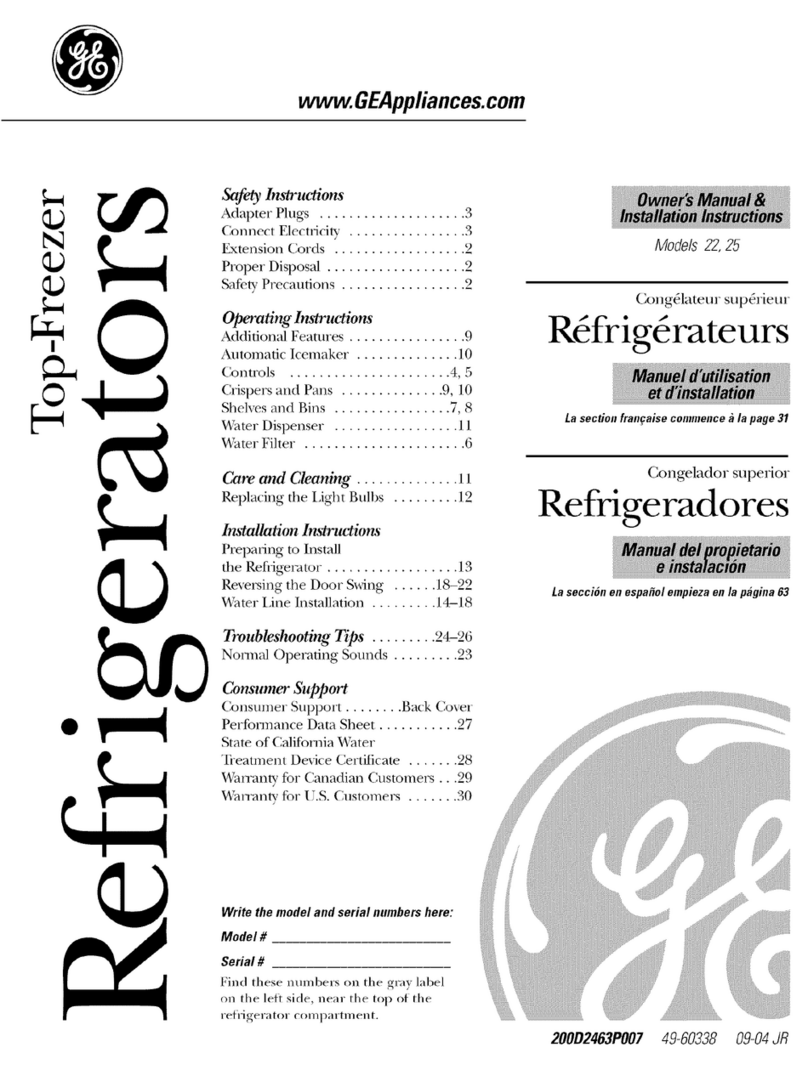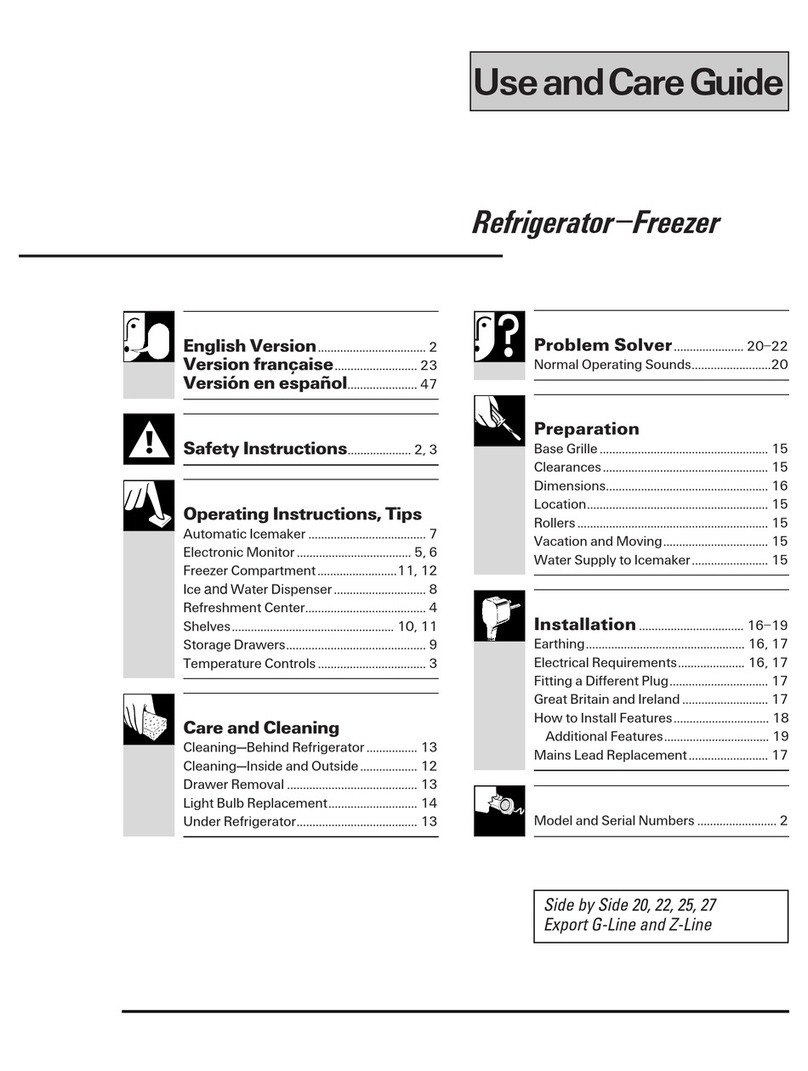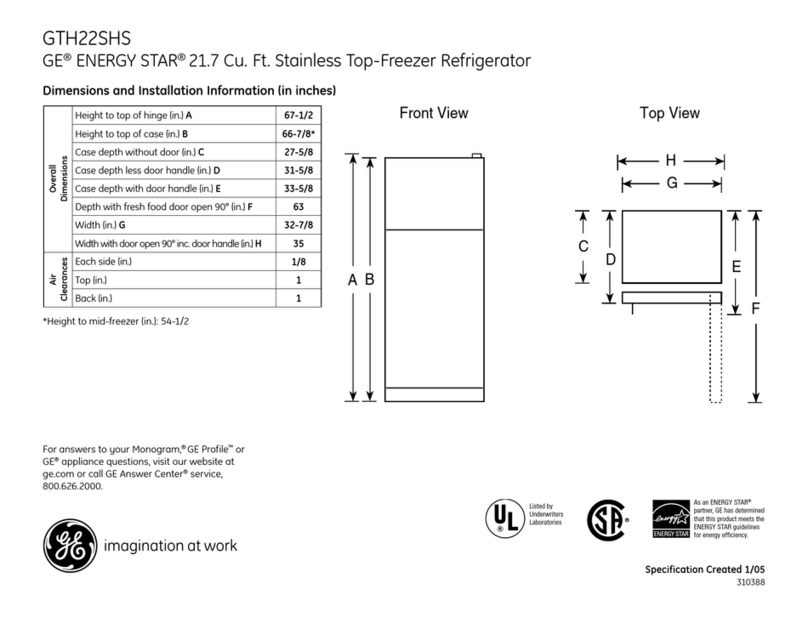
– 5 –
Operating haracteristics
Note:
Refer to Component Locator Views.
Refer to Schematics.
Component Description
The compressor and dryer are located in the
machine compartment at the bottom, rear of the
unit. The condenser is located under the unit. The
evaporator is located in the freezer compartment
on the back wall.
The capillary is soldered to the compressor
suction line. The capillary is also taped to the
suction line near the dryer. This arrangement
serves as a heat exchanger.
The temperature control and defrost control are
located in the control console. The control
console is located in the top of the fresh food
compartment. The evaporator fan is located in the
freezer compartment behind the air tower.
Electric l Oper tion
The power source provides 115 VAC to the
temperature control. The temperature control is a
thermostatic switch that closes when the fresh
food compartment temperature is higher than the
control setting. When closed, the temperature
control provides 115 VAC to the defrost control.
The defrost control contains a motor/cam
mechanism that switches the defrost control
between defrost mode and cooling mode. When
in cooling mode, the defrost control provides
115 VAC to the compressor, condenser fan, and
evaporator fan. The compressor, condenser fan,
and evaporator fan should always operate at the
same time.
Defrost Oper tion
The automatic defrost function is controlled by the
defrost control. The defrost control contains a
motor/cam mechanism that switches the defrost
control between defrost mode and cooling mode.
The defrost control motor/cam mechanism
operates only when the temperature control
(switch) is closed. After 8 hours of motor/cam
mechanism runtime in cooling mode, the defrost
control switches to defrost mode. The defrost
control will stay in defrost mode, providing 115 VAC
to the heater for 30 minutes of motor/cam
mechanism runtime. The defrost thermostat
switch is mounted on the evaporator and, when
closed, completes the neutral side of the defrost
heater circuit. The defrost thermostat switch
opens when the evaporator temperature raises to
58 °F and closes when the evaporator temperature
lowers to 28 °F. The defrost thermostat switch
typically opens during the defrost cycle, preventing
the heater from defrosting for the full 30 minutes.
The purpose for the 30 minute defrost mode at the
defrost control is to prevent the compressor from
operating and refreezing any water that may be
dripping from the evaporator.
ND103-02B
WARMER AIRMIXED AIR
COLD AIR
DAMPER
FAN
EVAPORATOR
Airflow
Freezer Compartment
Cold air from the evaporator is forced up against
the top of the freezer and the back of the
evaporator cover. It is then discharged through
